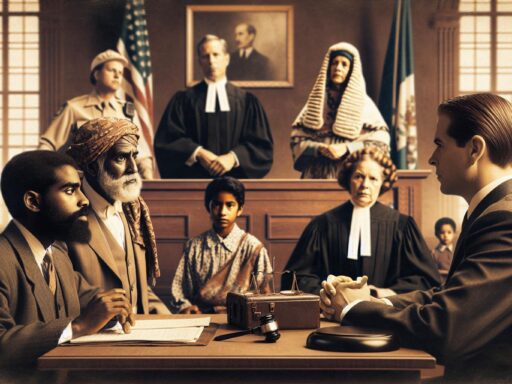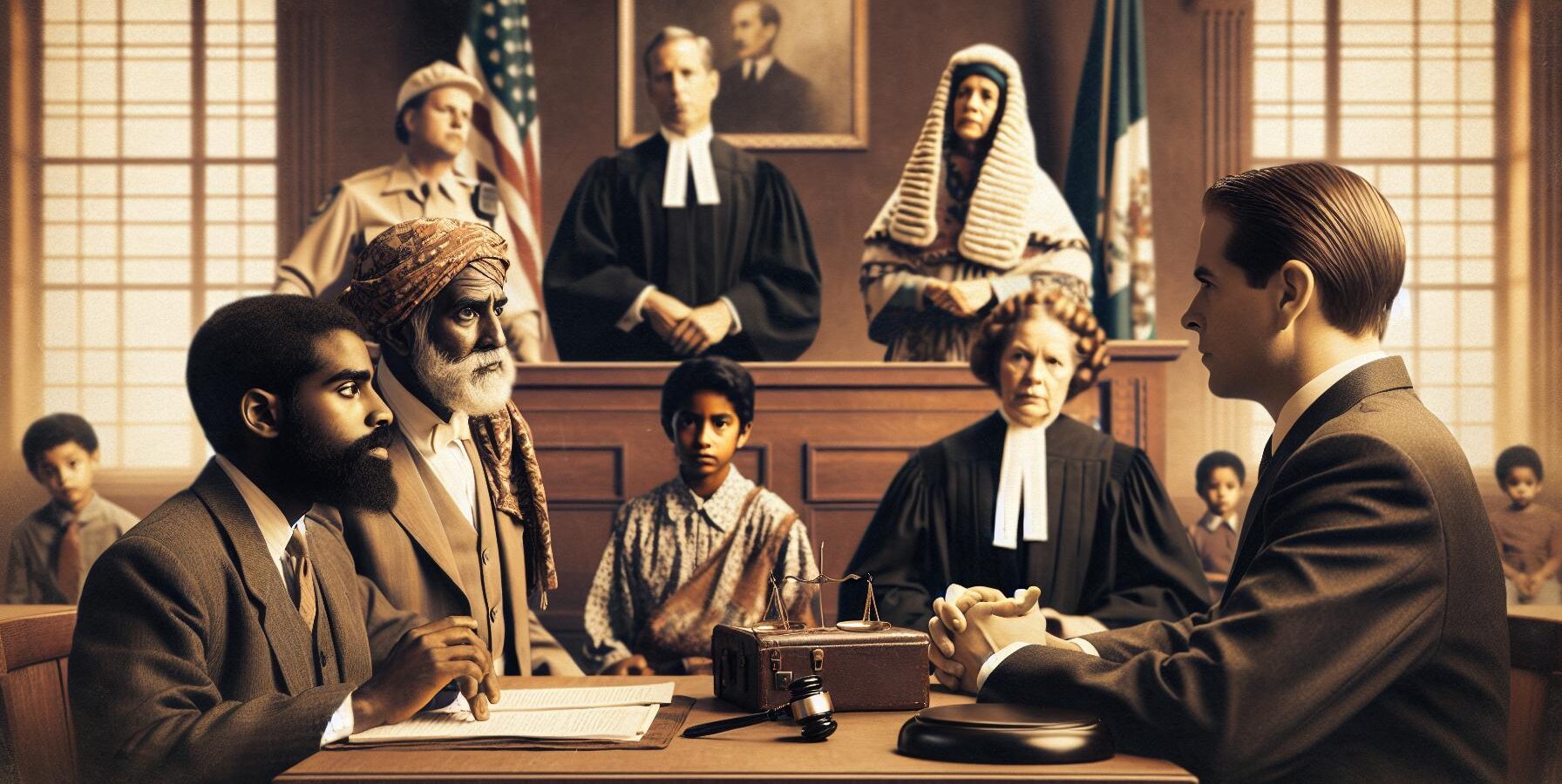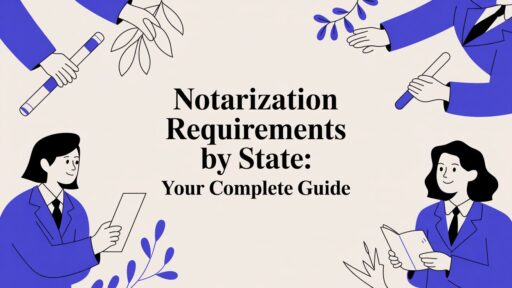When it comes to the well-being of a child, understanding the nuances between guardianship and custody can be crucial. These two legal terms, often used interchangeably, hold different implications for the child’s care and the adult’s responsibilities.
Guardianship and custody, both pivotal in shaping a child’s future, have distinct legal definitions and obligations. This article aims to shed light on these differences, helping you navigate the complex terrain of child welfare laws.
Whether you’re a parent, a relative, or a concerned adult, getting a firm grasp of these terms can empower you in making informed decisions. So, let’s delve into the intricacies of guardianship and custody, and unravel their implications in a child’s life.
Understanding Custody
In the realm of child welfare laws, custody plays a crucial role. It’s one of the most frequently used yet often misunderstood legal terms.
What is Custody?
Custody refers to the legal responsibility of a parent or a designated guardian over a child. It involves not just physical care but also includes making pivotal decisions for the child’s upbringing. For instance, in regards to education, healthcare, and religious practices.
Types of Custody
Custody divides into two main types: physical and legal custody. Physical custody implies the child’s living arrangements, as the child lives primarily with the parent who has physical custody. On the other hand, legal custody involves decision-making rights concerning a child’s life, such as education and healthcare choices. For example, parents with legal custody have the say in choosing the child’s school, deciding on vaccination, among other decisions.
In addition, these types can further break down into sole or joint custody. Sole custody implies one parent holds either or both physical and legal custody. Joint custody, however, indicates that both parents share the responsibilities equally.
| Custody Type | Definition | Example |
|---|---|---|
| Physical Custody | Decides child’s living arrangements | Child lives with one parent |
| Legal Custody | Involves decision making rights | Deciding child’s vaccination |
| Sole Custody | Only one parent holds responsibilities | Single parent handling all |
| Joint Custody | Shared custody between both parents | Shared responsibilities |
Importance of Custody
Recognizing the importance of custody is as crucial as understanding its concept. Having custody entails bearing the responsibility of a child’s care, ensuring their physical, emotional, and mental well-being. It provides a sense of structure and stability for the child, establishing a nurturing environment for their growth and development.
Understanding Guardianship
In essence, guardianship represents a legal mechanism set in motion to protect those who cannot care for themselves. It’s a realm borne out of necessity, catering particularly to minors, the elderly, and mentally incapacitated individuals.
What is Guardianship?
Guardianship refers to a legal relationship where an individual or a corporation obtains the court’s permission to make decisions on behalf of someone incapable, typically a minor or a person who is mentally challenged. This responsible party, called the guardian, undertakes certain obligations such as making decisions concerning health, education, and property on behalf of the ward.
Different Types of Guardianship
The lens of guardianship features a prism of different types. They broadly encompass individuals and corporations and can be drilled down by multiple factors, such as ward’s capacity, age, or asset size.
- Temporary Guardianship forms when an urgent, unplanned situation arises, making it a short-term solution for unexpected predicaments.
- Plenary Guardianship implies full guardianship wherein the guardian exercises all delegable rights and powers that the ward would have, given their status.
- Limited Guardianship cautiously allots certain rights and powers to the guardian, restricting their scope based on the ward’s needs and abilities.
The Role of a Guardian
A guardian is fundamentally a decision-maker and a caretaker, fulfilling a role of responsibility and accountability. They engage in safeguarding the ward’s personal, financial, and healthcare-related affairs. They act in the ward’s best interest, making informed decisions about medical care, schooling, and day-to-day life activities. Moreover, they’re often entrusted to manage the ward’s property, if any, and report annually to the court about the ward’s overall status and progress.
Guardianship vs Custody
Analysis of guardianship and custody uncovers the nuances distinguishing these two concepts, commonly intersecting in child welfare cases. This section delves deeper into the distinction between the two and considers the factors courts ponder while determining these matters.
Key Differences Between Guardianship and Custody
Guardianship and custody, while appearing similar, present distinct differences. In custody, parents hold the rights and responsibilities, including physical care and decision-making authority relating to upbringing (education, health, etc.). In contrast, a guardian, appointed by the court, assumes these responsibilities when parents can’t provide suitable care.
Specifically, parental rights remain intact in guardianship cases, yet are superseded in pursuit of the child’s welfare, for instance, by a guardian’s decision. Custody, on the other hand, can be split into physical and legal, each allowable to a separate parent based on court orders. These rulings determine where a child lives and who makes critical decisions regarding their upbringing. Consequently, parents retain a degree of control in custody, which might not be the case in guardianship.
| Category | Guardianship | Custody |
|---|---|---|
| Rights Holder | Guardian appointed by court | Biological or adoptive parents |
| Parental Rights | Overridden but not terminated | Transferred or shared based on court order |
| Decision-Making Authority | Guardian acts in best interests of the child | Allocated to one or both parents |
| Termination | Upon court decision or when child reaches adulthood | Depends on court decisions or child reaching majority |
| Responsibility Scope | Health, education, and property decisions on behalf of the ward | Physical care and decision-making authority on child’s upbringing |
Judicial Considerations: Custody vs Guardianship
In both custody and guardianship decisions, courts employ the standard of ‘best interests of the child’. Yet, factors influencing the rulings differ. Custody typically favors biological parents unless proven unfit or if joint custody seems unsuitable for the child. In contrast, the need for guardianship arises only when parents cannot fulfill their roles, due to factors like incapacitation, absence, or death.
Issues like parental fitness, child’s preference, sibling relationships and an environment conducive for the child’s physical and emotional well-being feature prominently in custody disputes. On the other hand, in guardianship cases, factors like the minor’s needs, exploitations risk, the guardian’s appropriateness, and their obligations towards the child’s property, if any, gain prominence.
| Court Consideration | Custody | Guardianship |
|---|---|---|
| Primary Standard | Best interests of the child | Best interests of the child |
| Parental Role | Typically favored unless proven unfit or if joint custody seems undesirable | Considered only if they can fulfill their roles |
| Key Factors | Parental fitness, child’s preference, sibling relationships, suitable environment for the child | Minor’s needs, risk of exploitation, suitability of the guardian, guardian’s responsibilities towards the child’s property |
| Duration | Until child reaches majority or as per court orders | Typically until child reaches majority, but can be terminated sooner by court orders |
Effects on the Child
Navigating the realms of custody and guardianship exerts substantial effects on a child’s life. These effects can pervade both emotional and preference-related realms, necessitating a thorough examination of these aspects.
Emotional Impact of Custody and Guardianship
The emotional reverberations experienced by a child, whether it’s in the context of custody or guardianship, are profound. Frequently, a child’s emotional stability is reliant on consistent parental and family interactions. Therefore, alterations in such arrangements, be it the award of guardianship or the allocation of custody, can induce emotional turmoil. By definition, custody, with its various embodiments including physical, legal, sole, and joint, can result in diverse emotional outcomes. For instance, joint custody, contingent on productive co-parenting, can foster a sense of stability and balanced relations.
Oppositely, guardianship may elicit different emotional responses in a child. Specifically, under guardianship—temporary, plenary, or limited—a child may experience feelings of loss or abandonment. The inflicted emotional trauma might not lessen even if guardianship is in the child’s best interest. The balance of these emotional impacts varies and, in some cases, the benefits of proper care and protection could alleviate the emotional burdens.
The Role of a Child’s Preference in Custody and Guardianship
Children’s voices play a momentous role in the realms of custody and guardianship decisions. Child preference frequently acts as a factor in a judicial ruling, provided the child attains a certain mature age — typically around 12 or 14. Court perceives the child’s preference as an indicator of their emotional and intellectual maturity, hence holding considerable influence on rulings.
In custody proceedings, courts often contemplate the child’s wish when deciding on physical and legal custody. For instance, if a child expresses a robust preference to live with one parent, the court may see it fit to award physical custody to that parent, assuming it also aligns with the child’s best interest.
Conversely, in guardianship cases, the child’s preference may hold lesser weight. The court’s primary focus lies on whether the parents are unfit or unable to provide suitable care rather than the child’s expressed preference. Nonetheless, where applicable, a child’s input may still carry relevance, reaffirming their role in the overall decision-making process.
Making the Decision
Dealing with matters of custody and guardianship requires a thoughtful approach. Deciding between the two involves several considerations, including understanding the legal implications and utilizing the appropriate resources.
Factors to Consider
Selection between custody and guardianship frequently demands consideration of several factors. First, the child’s emotional well-being holds substantial importance. Transitions between the two arrangements differ, in that altering guardianship can bring emotional disturbance, while tweaked custody terms might offer stability. For instance, custody modification from sole to joint can provide a more balanced environment.
Second, the desires of the child present considerations worth noting. As courts account for a child’s input, it signifies their maturity and ideal interests. For example, in custody cases, a child’s wish for shared parental involvement can be given credit.
Additionally, the kind of responsibility one is willing to undertake also dictates the choice, as guardianship entails decision-making for the ward on a large scale. As shown in the types of guardianship discussed previously, the responsibilities could range from managing personal affairs only, as in limited guardianship, to taking care of both personal and financial matters simultaneously, as in plenary guardianship.
Finally, the permanency of the solution needed is also a factor, considering custody generally offers a more stable and long-term arrangement as supposed to the often temporary nature of guardianship.
Legal Support and Resources
Leveraging legal support proves useful when navigating these convoluted issues. Lawyers specializing in child welfare can provide insight into the relevant laws, court proceedings, and other legal requirements. For example, they can provide guidance on the elements considered by the court in safeguarding a child’s best interest.
Additionally, numerous resources can be handy to parents or potential guardians, like literature on custody and guardianship, child welfare agencies, and online community forums for shared experiences and advice.
Legal aid societies and non-profit organizations also offer assistance to families in need. They can aid in understanding the difference between custody and guardianship, guide in discerning the right choice, and even offer free legal services to eligible individuals. Notably, entities like the Children’s Law Center or Child Advocacy Law Clinic are prominent examples of such resources. Their work ranges from educating people about their legal rights to representing children’s interests in the courtroom, thus proving essential in ensuring that the best decision is made for the child’s welfare.
Case Studies
Real-life cases provide further insights into the complexities of custody and guardianship issues.
Notable Custody Cases
Three prominent custody cases highlight the differing aspects of the law.
- McCready custody battle: Country singer Mindy McCready’s son, Zander, became part of a high-profile custody battle in 2011. Although McCready’s mother had legal custody, Mindy’s failure to return Zander after a visit sparked a complicated legal fight.
- Rutherford case: In 2015, actress Kelly Rutherford faced legal issues when her two children were permitted to live with their father, Daniel Giersch, in Monaco—a decision ultimately upheld by the courts.
- O.J. Simpson case: Post his high-profile trial in 1994, O.J. Simpson won custody of his children against their grandparents. The result instigated significant discussions on the effectiveness of the child custody process.
Notable Guardianship Cases
Two landmark guardianship cases underline the gravity of decision-making.
- Britney Spears’ conservatorship: The pop star’s father, Jamie Spears, was appointed as her conservator in 2008, paving the way for an ongoing legal battle over the restrictions and control this guardianship arrangement imposed.
- Jahi McMath case: Jahi was declared brain dead after a tonsillectomy, but her parents refused to accept the diagnosis. They fought to have her declared alive, highlighting the complex layers of medical guardianship.
The attributes of these cases clarify the intricate nuances of custody and guardianship and their impacts on a child’s life. Each instance brings unique challenges which social welfare agencies, lawyers, and non-profit organizations assist in navigating. They serve as reminders of the criticality involved in making decisions in the child’s best interest.
Conclusion
Navigating the world of custody and guardianship can be daunting. It’s crucial to understand the types and impacts these decisions can have on a child’s life. From physical and legal custody to temporary and plenary guardianship, each carries its own set of responsibilities and emotional implications. The importance of a child’s preference in these matters can’t be overstated. Real-life cases like those of Mindy McCready, Kelly Rutherford, Britney Spears, and Jahi McMath illuminate the complexities involved. They underscore the necessity for guidance from social welfare agencies, legal professionals, and non-profit organizations. It’s evident that these decisions, while intricate, should always prioritize the child’s best interest. The child’s well-being, stability, and growth hinge on these critical choices.
Discover the Power of BlueNotary:
Integrate your Business, Title Company, or Law Firm to Satisfy your Customers and Decrease Turnaround
Get a document Notarized/Sign-up
Join the Free Notary Training Facebook Group
What is the article about?
The article discusses the various forms of child custody and guardianship, their importance for a child’s well-being, and their ramifications, highlighted through real-life case studies.
What types of custody are discussed in the article?
The article covers physical, legal, sole, and joint custody.
What types of guardianship are analyzed?
The article mentions temporary, plenary, and limited guardianship.
What roles do custody and guardianship play in a child’s life?
Custody provides structure and stability for a child’s growth, while guardianship involves decision-making for the child’s well-being.
What are the emotional impacts of custody changes on children?
Custody changes can psychologically affect children, often causing stress, anxiety, and other emotional difficulties.
Does the child’s preference matter in custody decisions?
Yes, the kid’s preference often plays a significant role in custody decisions, depending on the child’s age and maturity.
Which real-life cases are discussed in connection with custody issues?
The battles of Mindy McCready and Kelly Rutherford for custody are covered in the article.
Which guardianship cases are cited?
The cases of Britney Spears’ conservatorship and Jahi McMath’s medical guardianship are elaborated upon.
What support is necessary to navigate custody and guardianship issues?
It’s imperative to seek help from social welfare agencies, lawyers, and non-profit organizations in handling these complex areas.








